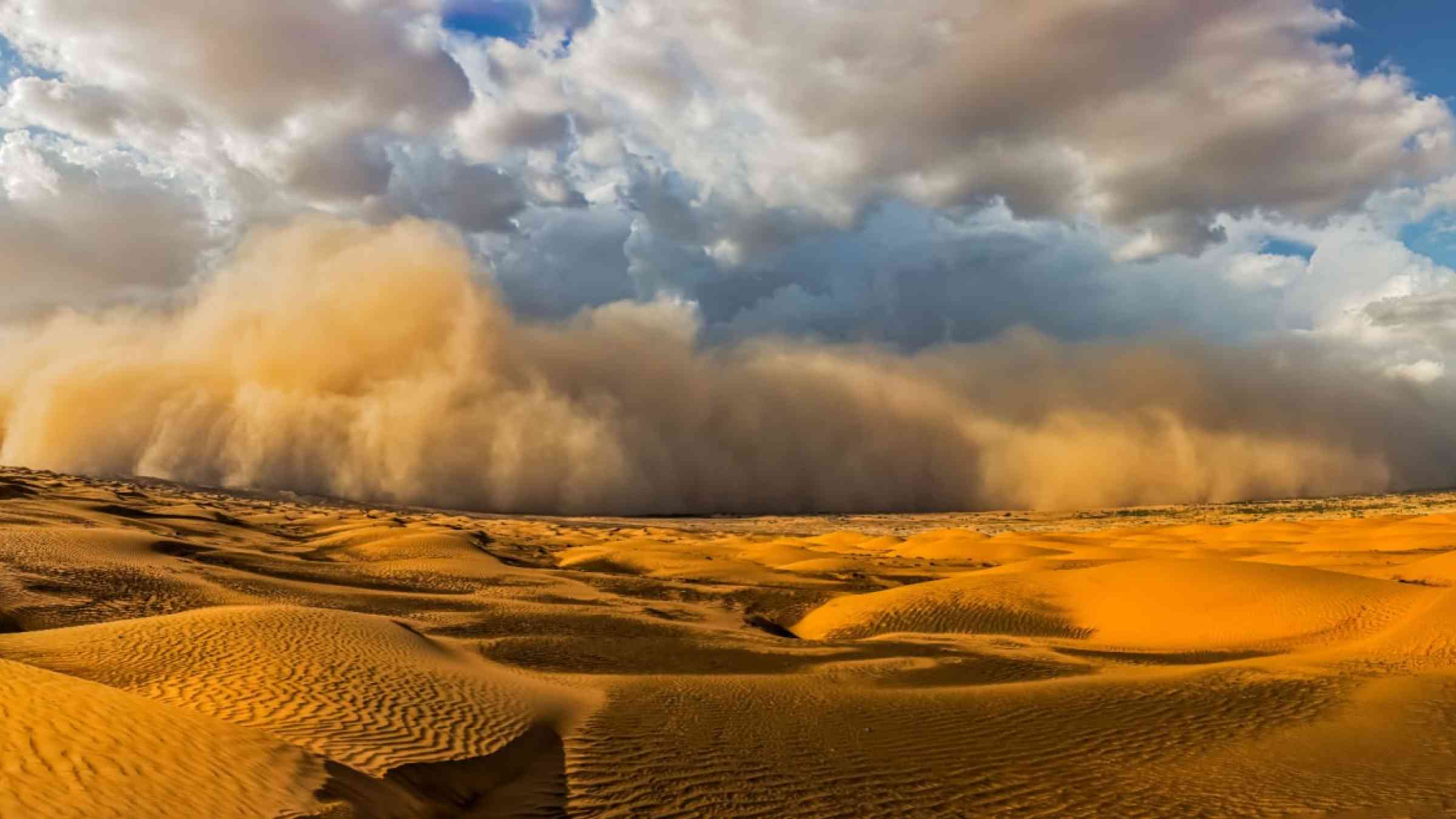Launch of the SDS Toolbox of the UNCCD on the International Day of Combating Sand and Dust Storms (SDS)

The frequency of sand and dust storms (SDS) is on the rise in various regions across the globe. This rise is attributed to factors such as human-driven climate change, desertification, land degradation, and persistent droughts.
These storms occur when strong winds lift large amounts of sand and dust from dry, arid soils into the atmosphere. They often carry these particles long distances, sometimes hundreds or even thousands of kilometers. The effects of these storms are widespread and often devastating. The World Health Organization estimates that 7 million people die from poor air quality every year, which is at least partly attributed to dust.
Sand and dust storms pose numerous threats to human health, disrupt livelihoods, and wreak havoc on the environment. Managing these impacts is a major challenge, as human activity, and desertification in one region can trigger sand and dust storms that cause significant damage in remote regions.
Recognizing the urgent need for international cooperation to address SDS, the General Assembly adopted a resolution (A/RES/77/294) on 8 June 2023, designating 12 July as the International Day to Combat Sand and Dust Storms. This day is intended to raise awareness of the link between health and sustainability in the context of SDS.
To mark the first observance of the International Day to Combat SDS, several events were organized around the world. The “Commemoration of the International Day of Combating Sand and Dust Storms” event, co-organized by the Permanent Missions of Iraq, the Islamic Republic of Iran, and Senegal at the United Nations Headquarters in New York, featured various speakers from organizations collaborating in the UN SDS Coalition. At the same time, the World Meteorological Organization (WMO) hosted a series of regional webinars bringing together stakeholders from different regions.
In line with the observation of the day, the UNCCD launched the new SDS Toolbox, a result of its collaboration with SDS Coalition partners. The toolbox provides a comprehensive set of tools, strategies, and guidelines for understanding and mitigating the impact of SDS.
Ibrahim Thiaw, Executive Secretary of the UNCCD, extended a warm welcome to this initiative, stating, "We welcome the focus and efforts to raise awareness of this serious phenomenon. It shows how desertification and drought can have far-reaching effects beyond national borders and underlines the crucial role of cooperation in addressing these issues. We anticipate that the newly launched SDS Toolbox will foster much-needed collaboration by providing tools and guidance to our stakeholders."
During the commemoration of the International Day to Combat SDS in New York, representatives of the SDS Coalition discussed ways to strengthen cooperation between the Coalition and various national and regional initiatives. They emphasized that regional cooperation is essential to address the transboundary nature of sand and dust storms and their impacts, and that regional action can complement national efforts to achieve sustainable development goals.